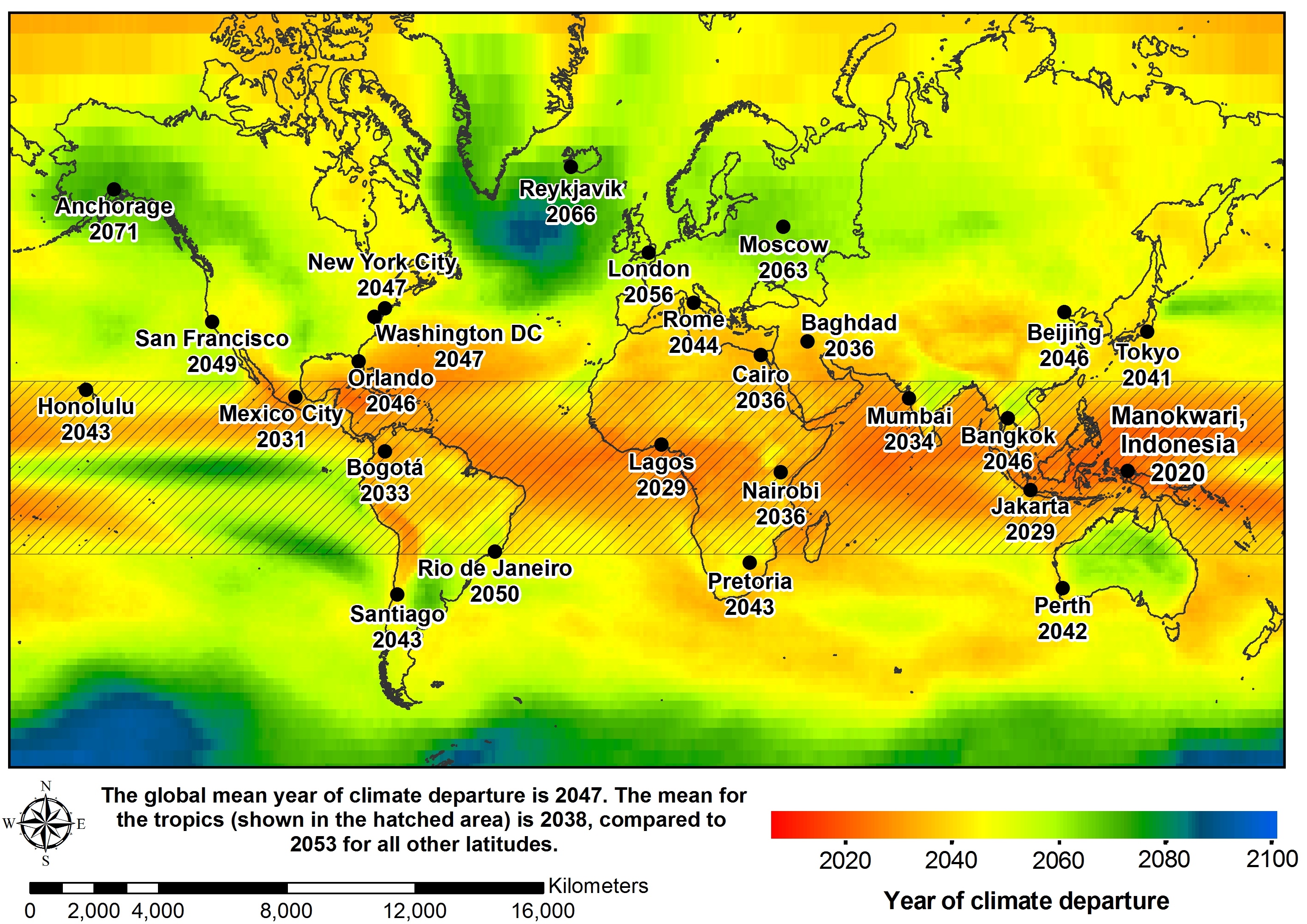Forget Polar Bears — Warming Will Hit the Tropics First

Amber-eyed jaguars could soon boot out polar bears as king of adorable, furry species nearing extinction because of global warming.
In the next 10 years, the tropics will suffer "unprecedented" climate change effects, long before the Arctic and its polar bears see big shifts, according to an analysis of global warming trends published today (Oct. 9) in the journal Nature.
But the study goes far beyond simply highlighting the plight of tropical plants and animals. For the first time, researchers have pinpointed individual tipping points, the years when each of the world's capitals will see climate extremes become the norm. New York City is fated to flip over to hotter temperatures in 2047, give or take five years, if carbon dioxide emissions continue at current levels, researchers say.
"The coldest year in the future will be hotter than the hottest year in the past [150 years]," said Camilo Mora, lead study author and a geographer at the University of Hawaii, Manoa.
The planet's climate forecast also includes ocean acidity, new rainfall patterns and sea level rise. [Climate Change Forecast: City Tipping Point Dates]
"We hope that this analysis will bring home the message that climate change is on the way," said Abby Frazier, a study co-author and graduate student in climatology, also at the University of Hawaii, Manoa.
The warming predictions come from a meta-analysis by Mora and his co-authors — all University of Hawaii students — of 39 climate models independently developed by climate scientists from 12 countries. A meta-analysis is a statistical approach, commonly used in medicine, that gathers existing research and examines trends in the data. Sometimes, surprising results emerge, such as the finding that a couple of daily drinks can help keep your heart healthy.
Sign up for the Live Science daily newsletter now
Get the world’s most fascinating discoveries delivered straight to your inbox.
The University of Hawaii team looked beyond surface temperatures, considering how animals, plants and humans would respond to new climate patterns such as increasing ocean acidity, sea level rise and shifting rainfall. The researchers offer two predictions: one with no reductions in carbon emissions by 2100, and one with a moderate rollback in global carbon dioxide output.

Tropics in transition
The tropics' dire prognosis comes from their stable climate, the study authors said. Unlike their Arctic relatives, which live through massive temperature swings every summer and winter, animals and plants living close to the equator expect their homes to stay the same pretty much year-round. Just a little nudge — warmer temperatures, less rainfall — will throw these ecosystems out of whack, the study finds.
"We are not underestimating the importance of climate change at the poles, we are pointing out the fact that we have been overlooking the potential high impact that will happen at the tropics," Mora said.
But there's little information on just how tropical species will react to climate change. "There is strong evidence that most tropical species occupy narrower climatic ranges than species in the middle and higher latitudes. A challenge is that we do not have detailed physiological data for most species, particularly tropical species," said Jack Williams, a geographer at the University of Wisconsin-Madison who was not involved in the study.
"So there is reason to suspect that tropical species may be particularly sensitive to climate change, but it is not clear to what degree this translates to heightened risk of extinction," Williams told LiveScience. [Earth in the Balance: 7 Crucial Tipping Points]
But it's not just the South American rainforests that will soon undergo climatic shifts. Countries ringing the planet's tropical latitudes will tip over before 2030. The Bahamas (2029); Jamaica (2023); Haiti (2025); Manokwari, Indonesia (2020); and Palau (2023) are on the list. So are the African nations of Sierra Leone (2028); Cameroon (2025); Gabon (2024); and the Democratic Republic of Congo (2028).
"By 2050, between 1 [billion] and 5 billion people, depending on carbon mitigation scenarios, will live in areas undergoing unprecedented climate change," said Ryan Longman, a study co-author and graduate student at the University of Hawaii, Manoa. "The countries most impacted are ones with the least ability to respond."
Email Becky Oskin or follow her @beckyoskin. Follow us @livescience, Facebook & Google+. Original article on LiveScience.










